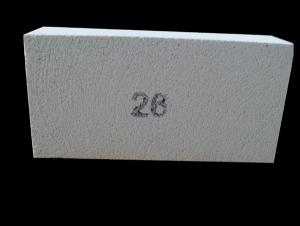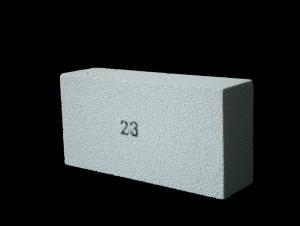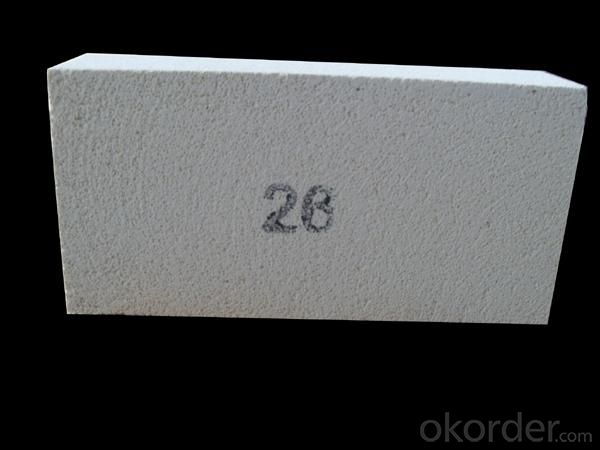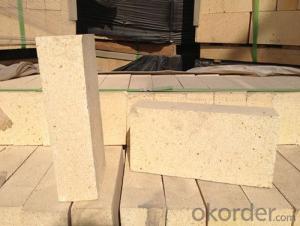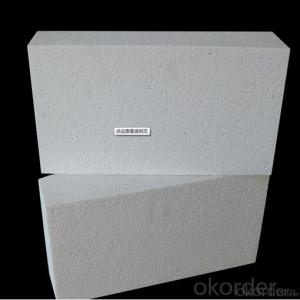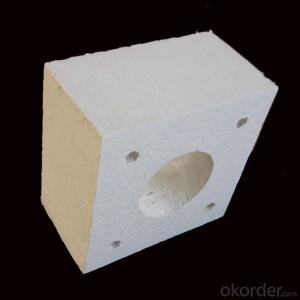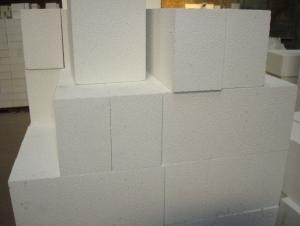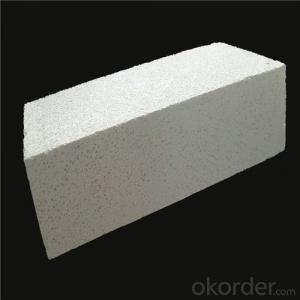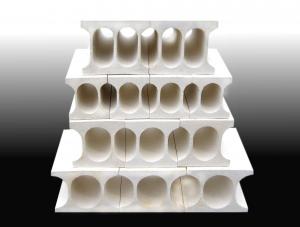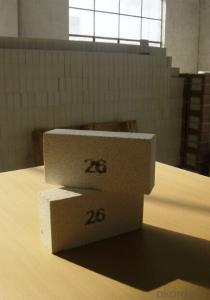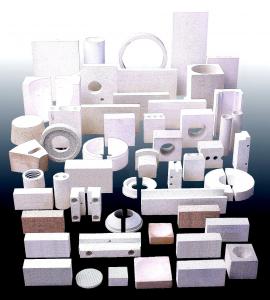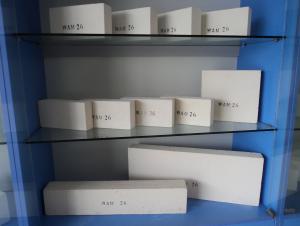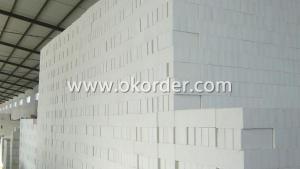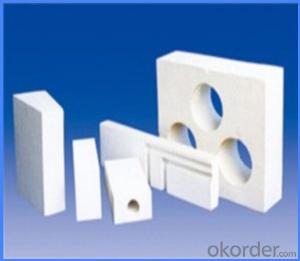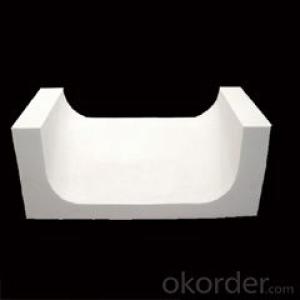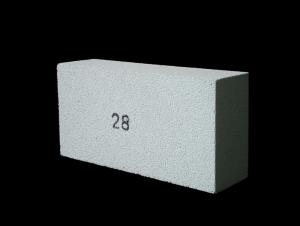Insulating Fire Brick MS23 - High Performance Insulation
- Loading Port:
- China Main Port
- Payment Terms:
- TT or L/C
- Min Order Qty:
- 1000 pcs pc
- Supply Capability:
- 1000 Tons Per Month pc/month
OKorder Service Pledge
OKorder Financial Service
You Might Also Like
General Information of insulating fire bricks MS23
The insulating firebricks temperature is 1260℃(2300℉) and the bricks are manufactured from high purity alumina clay.
Feature of insulating fire bricks MS23
Light weight and low thermal conductivity
Low heat storage
Low iron and impurities
High thermal shock resistance
Application of insulating fire bricks MS23
The insulating firebricks can be used as a hot face lining directly exposed to the heat or as a backup insulation layer in iron and steel mills, non-ferrous foundries, petrochemical, ceramic, glass.
Technical Data of insulating fire bricks MS23
|
| MS23 |
Physical Properties: |
|
|
Classifiction Temperature | ℃ | 1260.0 |
Density | Kg/m3 | 550.0 |
Cold Crushing Strength | Mpa | 1.2 |
Reheating Linear Change(24hrs) |
|
|
1230℃ | % | 0.4 |
Hot Load Strength Deform(90 minutes) |
|
|
1100℃ at 0.034 Mpa(5psi) | % | 0.1 |
Thermal Conductivity |
|
|
400℃ | W/m.k | 0.2 |
600℃ | W/m.k | 0.2 |
800℃ | W/m.k | 0.2 |
1000℃ | W/m.k | 0.2 |
Specific Heat | KJ/Kg.K | 1.1 |
Chemical Analysis: |
|
|
Al2O3 | % | 47.0 |
SiO2 | % | 44.4 |
Fe2O3 | % | 0.9 |
TiO2 | % | 1.2 |
CaO | % | 5.2 |
MgO | % | 0.3 |
Na2O+K2O | % | 1.1 |
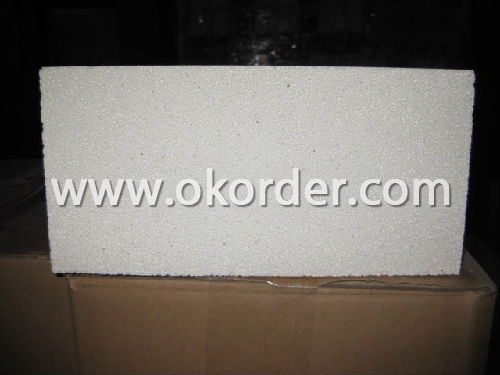
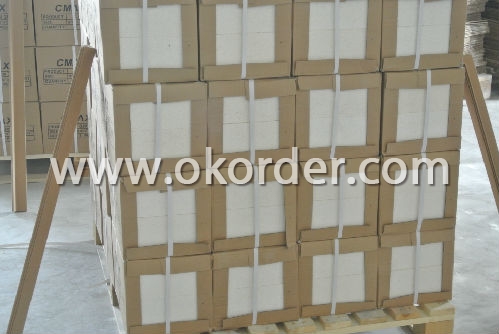
- Q: What are the different types of insulating fire bricks available in the market?
- In the market, one can find a variety of insulating fire bricks. Some of the frequently encountered types are as follows: 1. Lightweight Fire Bricks: These bricks are crafted from lightweight and porous materials like expanded clay, vermiculite, or perlite. They possess exceptional insulation properties and are commonly utilized in scenarios where weight is a critical factor, such as lining kiln or furnace walls. 2. Ceramic Fiber Bricks: These bricks are formed by compressing and shaping ceramic fibers. They exhibit high insulation properties, low thermal conductivity, and can withstand high temperatures. Ceramic fiber bricks are frequently employed in applications that demand insulation in high-temperature environments, such as constructing industrial furnaces or ovens. 3. Calcium Silicate Bricks: These bricks are produced from a combination of lime, silica, and reinforcing fibers. They possess favorable thermal insulation properties and are resistant to thermal shock. Calcium silicate bricks are commonly employed in situations where high-temperature insulation is necessary, such as building boilers or incinerators. 4. Magnesia Bricks: These bricks are composed of highly refractory magnesium oxide. They possess excellent thermal insulation properties and can endure extremely high temperatures. Magnesia bricks are often used in environments requiring insulation at high temperatures, such as lining steel-making furnaces or glass melting tanks. 5. Vermiculite Bricks: These bricks are made from naturally occurring expanded vermiculite. They exhibit good insulation properties, low thermal conductivity, and resistance to high temperatures. Vermiculite bricks are commonly used in applications that necessitate lightweight insulation, such as constructing chimneys or fireplace surrounds. In conclusion, the selection of insulating fire bricks depends on specific requirements like desired insulation level, temperature resistance, and weight considerations for the particular application.
- Q: Can insulating fire bricks be used in incinerators?
- Yes, insulating fire bricks can be used in incinerators. Insulating fire bricks are specially designed to provide excellent thermal insulation, making them ideal for applications where high temperatures need to be maintained. In incinerators, which operate at extremely high temperatures, insulating fire bricks can help to reduce heat loss and improve the overall energy efficiency of the system. Additionally, these bricks have good resistance to thermal shock, which is crucial in incinerators where rapid temperature changes occur. Therefore, using insulating fire bricks in incinerators can help to enhance their performance and longevity.
- Q: Is it possible to recycle broken insulating fire bricks?
- It is indeed feasible to recycle damaged insulating fire bricks. These bricks are typically composed of recyclable materials like clay and alumina. After breaking, they can be crushed into tiny particles or ground into a fine powder. These fragments can then be blended with other substances to produce fresh bricks or alternative construction materials. Furthermore, certain recycling facilities may accept broken insulating fire bricks and repurpose them for use in various industries. By recycling these bricks, waste is minimized, resources are conserved, and the environmental consequences of manufacturing new bricks from scratch are reduced.
- Q: Are insulating fire bricks resistant to impact or mechanical stress?
- Yes, insulating fire bricks are resistant to impact and mechanical stress. Insulating fire bricks are made from lightweight refractory materials that are designed to withstand high temperatures and thermal shock. These bricks are specifically engineered to have a high resistance to mechanical stress and impact, making them suitable for various applications where they may be subjected to external forces or pressure. Their structural integrity and durability allow them to maintain their shape and thermal insulation properties even when exposed to mechanical stress or impact, making them an ideal choice for use in furnaces, kilns, and other high-temperature environments.
- Q: Do insulating fire bricks require any special storage conditions?
- Yes, insulating fire bricks require special storage conditions. They should be stored in a dry and well-ventilated area to prevent moisture absorption, which could lead to cracking or damage when exposed to high temperatures. Additionally, they should be protected from direct sunlight and extreme temperature variations to maintain their structural integrity.
- Q: Can insulating fire bricks be used for insulation in foundries?
- Insulating fire bricks have the capability to be utilized for insulation purposes in foundries. These bricks are specially constructed to possess a high level of thermal resistance and a low level of thermal conductivity, rendering them exceptionally suitable for scenarios that necessitate insulation. In the context of foundries, where elevated temperatures are present, insulating fire bricks can be employed to line the walls, floors, and roofs, thus diminishing heat loss and enhancing energy efficiency. Furthermore, they contribute to maintaining a consistent temperature within the foundry, thereby ensuring uniform dispersion of heat while preventing heat loss to the surrounding environment. Moreover, owing to their lightweight nature and easy installation process, insulating fire bricks emerge as a pragmatic choice for insulation in foundries.
- Q: Are insulating fire bricks resistant to warping?
- Yes, insulating fire bricks are resistant to warping. They are specifically designed to have high thermal stability and low thermal conductivity, which helps to prevent warping even under high temperatures.
- Q: Do insulating fire bricks have a low density?
- Yes, insulating fire bricks have a low density compared to other types of bricks. These bricks are designed to have a porous structure, which helps in reducing heat transfer and increasing insulation properties. The low density of insulating fire bricks allows them to provide effective thermal insulation while also being lightweight. This makes them suitable for various applications where heat retention and energy efficiency are important, such as in kilns, furnaces, and fireplaces.
- Q: Are insulating fire bricks resistant to carbon monoxide?
- Indeed, insulating fire bricks demonstrate a remarkable resistance to carbon monoxide. Tailored for enduring extreme temperatures, these bricks find common application in environments where they are likely to encounter both intense heat and corrosive agents, including carbon monoxide. The insulating nature of these bricks bestows upon them an exceptional ability to impede heat transfer, ensuring their structural integrity remains intact even in the presence of carbon monoxide and other combustible gases. This resistance to carbon monoxide renders insulating fire bricks a stellar choice for various settings like furnaces, kilns, and other high-temperature surroundings where the potential for carbon monoxide exposure looms.
- Q: What materials are used for roof insulation?
- There are two kinds: one is a kind of cotton insulation board, such as rock wool board, aluminum silicate cotton board, but this is not environmental protection, harmful to life, foam board (this fire safety factor minimum), these relatively cheap.
1. Manufacturer Overview
| Location | Jiangsu, China |
| Year Established | 2008 |
| Annual Output Value | Above US$ 35 Million |
| Main Markets | Germany; Italy; Turkey; France; England; Japan; Thailand; Vietnam; Idonesia; USA |
| Company Certifications | ISO 9001:2008 |
2. Manufacturer Certificates
| a) Certification Name | |
| Range | |
| Reference | |
| Validity Period |
3. Manufacturer Capability
| a) Trade Capacity | |
| Nearest Port | Shanghai; Qingdao |
| Export Percentage | 10% |
| No.of Employees in Trade Department | 3 People |
| Language Spoken: | English; Chinese; |
| b) Factory Information | |
| Factory Size: | Twenty five thousand tons per year |
| No. of Production Lines | Above 5 |
| Contract Manufacturing | OEM Service Offered; Design Service Offered |
| Product Price Range | High; Average |
Send your message to us
Insulating Fire Brick MS23 - High Performance Insulation
- Loading Port:
- China Main Port
- Payment Terms:
- TT or L/C
- Min Order Qty:
- 1000 pcs pc
- Supply Capability:
- 1000 Tons Per Month pc/month
OKorder Service Pledge
OKorder Financial Service
Similar products
Hot products
Hot Searches
Related keywords
